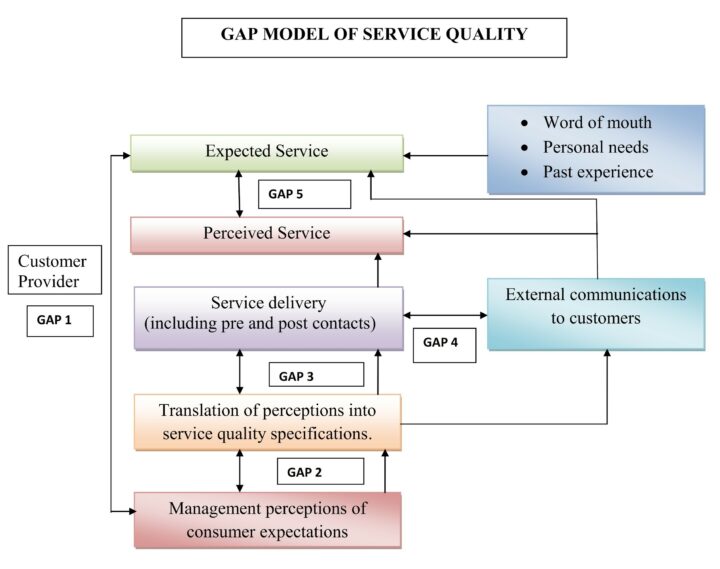
Starting a business is very similar to raising a baby. First of all, it needs rigorous planning before establishment, regarding what shall it require once in this world, will you be able to afford the increased expenses, and are you ready for such a full-time commitment? Once it comes into existence, you have to cater to its every need. You need to spend all your time looking after it. However, the only difference is that the babies are sure to grow up well, but the businesses… not so much. Approximately 90% of startups failed in 2019. Why? They entered the wrong market, ran out of money, lazed out on researching, their partnership didn’t work out, or their marketing was not good enough. These are the top reasons for the failure of the newly started business.
Tips To Ensure Business Success
Here is some advice that you can follow to avoid the failure of your business:
1. Understand The Market Demand
There is no point watering the outdoor plants when it’s already raining. Similarly, there is no point selling a product in the market that already has established competitors.
Study the market and analyze what products the customers need? Are they in need of a new product? Do similar businesses exist in the market; if they do, how loyal is their consumer base? Answers to all the above questions will form the answer to your problem.
Lack of market knowledge before starting a business is equivalent to the ignorance of not studying the competitor’s weaknesses before your final match with them. Let’s be honest, this is not a Bollywood drama movie, where despite the ignorance of the protagonist, his victory is guaranteed. This is real life. One small mistake and all your hard work is down the drain.
It is better to do the market research. Keep an eye on the stock market, monitor social media, and even conduct surveys.
2. Know Gaps In The Service Model
There is a noticeable difference between the services provided to the customers and their expectations of services. Understand such gaps, and try to overcome them. Introduced by Parsuraman, Leonard. L. Berry and V.A. Zeithaml, the SERVQUAL model (a word formed by combining the words service and quality) explain the view of the consumer-company relationship. It identifies five gaps and explains further how to overcome them.
(Image Source)
Allow me to explain this concept with a simple example. Mr. VK was traveling from Korea to India. While looking for a hotel online, he came across the hotel Your Dreams. He went through the website and was impressed when he saw the pictures of highly sanitized and luxurious rooms. He was on cloud 9 when he read they have an adjoined bar too! ‘What highly sanitized bar would that be when the rooms are so clean!’ he thought to himself. After traveling for hours and arriving at the hotel, Mr. VK was disappointed when the bar wasn’t prepared and the services there were very poor.
This gap is called the knowledge gap. It is the gap arising between the customers’ expectations about your business’ product or service and your perception about their expectations. Mr. VK expected the bar to be clean and classy; however, Your Dreams assumed that the customers’ expectations might be limited to clean and luxurious rooms.
The next gap arises between your understanding of customers’ expectations and how you translate that into the service. In our example, the manager must have instructed the employees to focus on the room services. Gap 3, the delivery gap, is when the employees deliver only the room service and neglect the bar services. The communication gap, also known as gap 4, is between the communication between the customer and the employees. The final gap is created between the service that the expected service and the actual service received by the customers. It is known as the customer gap.
Each of these gaps has its own causes. However, the only way in which the companies can close the fifth (and the ultimate) gap is by closing the other four gaps. If even one of the gaps is not fulfilled, the organization cannot achieve perfection in their service delivery process.
Overcoming these gaps in service delivery is what assists the organizations to have a positive public image and become successful.
3. Improve Your Social Media Presence
The entire world is on social media these days (except for someone who is banned from almost all social platforms). If your company does not have a business account on platforms like Instagram, Facebook, or Twitter, it truly exists under the rock.
Again, having an account is not enough. One must be active on it, imbibing all the positive suggestions and criticisms they face on such platforms. The netizens check your constant participation in the online discussions, your views and comments on the political issues and your replies to the queries and suggestions on your replies. Social media presence is what keeps the business in talk. This is the era of searching online and buying offline. In such a case, having a positive image and positive presence on social networking sites helps your business attract a large pool of prospective customers.
Moreover, how you react to the negative comments is what intrigues your customers. Cutting iron with iron is not going to work in such a case. Always reply to the negative comments with politeness (kill them with kindness, wink wink). Being positive and kind to the haters is what creates a better image in the eyes of your customers.
4. Automate Your Business Processes
You cannot continue performing every business process manually. As your business expands, you need to adopt automation to perform monotonous and repetitive operations. Manual processes are prone to human errors and inaccuracy. This may result in having lawful or ethical compliance issues.
The most common processes that are repetitive and complex include payroll calculation, attendance and leave management, travel and expense management, retirement benefits and performance management of your employees . These are in the field of human resources alone. Having numerous departments in the business, this is just one small slice of the tedious tasks pie in the organization.
Automation can assist the organizations to save time and money on such tasks. For example, the HR tasks can be overcome by the services provided by many HR management software in India. Similarly, using software and technology to complete the daily processes without much human intervention assures its accuracy, compliance and resistance to human errors, thereby increasing the productivity of your staff and allowing them to complete the other important tasks at a faster pace.
5. Create A Brand Strategy
A brand strategy represents what the brand stands for, a promise made by the business, and a personality that they want to convey. Although people may assume that their logo, colour palette and slogan is what makes the organization’s brand strategies, and they are not wrong.
Any business’ brand strategy depends on the following three piers.
- The organization’s desire of making their brand reach a particular position – their vision
- The tag line representing the core values that stays the same throughout the lifetime of the business – their values
- Your brands journey from its establishment to where it is now – their story.
In order to create a successful brand strategy, you need to follow four simple steps given below:
- Brand Positioning: The very first step in your brand strategy is to position your brand. This allows you to determine the market niche of your product. You can determine the target market area for your business brand.
- Selecting Brand Name: A brand name is what differentiates your company from the rest of the market. Your brand name should be easily identifiable, unique, and easy to remember.
- Brand Sponsoring: It refers to promoting your brand in the market with the intention to expand the market coverage of the brand.
- Brand Development: It is the latest feature of brand strategy. It is necessary to develop the brand as time passes. This provides you a chance to have a better consumer base and include new consumers to the count as your brand develops.
Ending Notes
The only constant in the world is change. The businesses must adapt to the changes in the market in order to survive in one. It is not a comfortable journey, to create a business from scratch, nurture it, struggle to keep it alive, only to see it falling down into ashes. Follow the tips mentioned above in order to give your business a chance to survive. Quoting the words of the great Chinese philosopher and teacher – Confucius – “the key to success is often the ability to adapt.” That one sentence says it all.
Author Bio:
Shubham Joshi is a Business Consultant. Apart from managing and improving business processes, his hobby is to spread his vast area of knowledge to the people out there. He loves to create content that is innovative and engaging for the readers.




